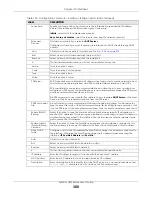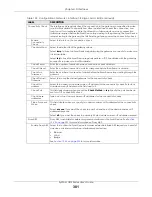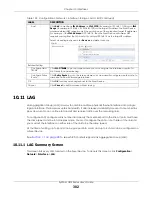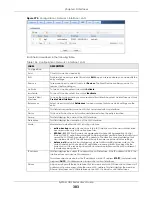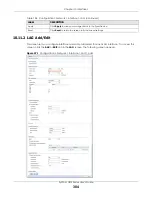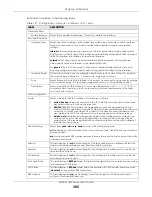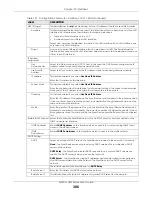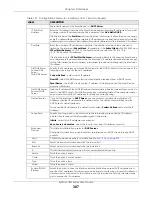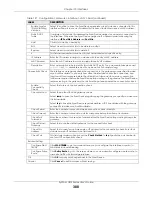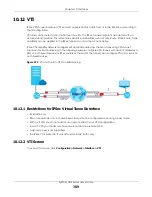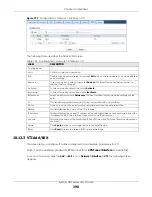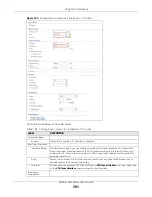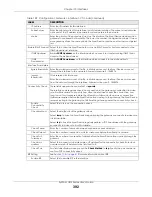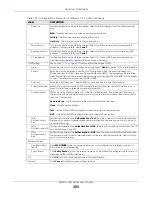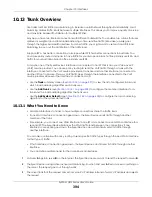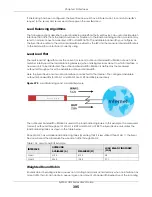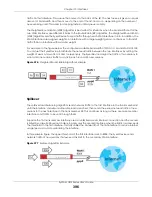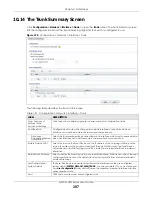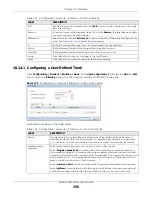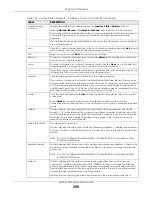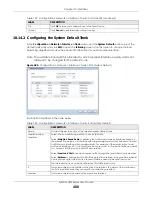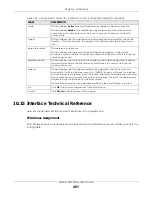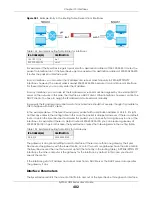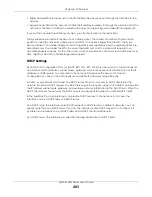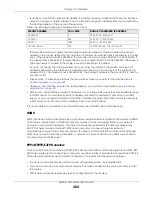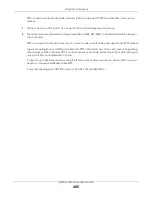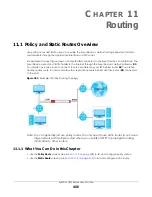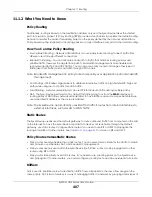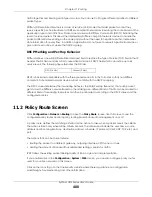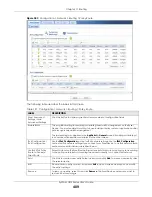
Chapter 10 Interfaces
ZyWALL USG Series User’s Guide
394
10.13 Trunk Overview
Use trunks for WAN traffic load balancing to increase overall network throughput and reliability. Load
balancing divides traffic loads between multiple interfaces. This allows you to improve quality of service
and maximize bandwidth utilization for multiple ISP links.
Maybe you have two Internet connections with different bandwidths. You could set up a trunk that uses
spillover or weighted round robin load balancing so time-sensitive traffic (like video) usually goes
through the higher-bandwidth interface. For other traffic, you might want to use least load first load
balancing to even out the distribution of the traffic load.
Suppose ISP A has better connections to Europe while ISP B has better connections to Australia. You
could use policy routes and trunks to have traffic for your European branch office primarily use ISP A and
traffic for your Australian branch office primarily use ISP B.
Or maybe one of the Zyxel Device's interfaces is connected to an ISP that is also your Voice over IP
(VoIP) service provider. You can use policy routing to send the VoIP traffic through a trunk with the
interface connected to the VoIP service provider set to active and another interface (connected to
another ISP) set to passive. This way VoIP traffic goes through the interface connected to the VoIP
service provider whenever the interface’s connection is up.
• Use the
Trunk
summary screen (
) to view the list of configured trunks and
which load balancing algorithm each trunk uses.
• Use the
Add Trunk
screen (
) to configure the member interfaces for a
trunk and the load balancing algorithm the trunk uses.
• Use the
Add System Default
screen (
) to configure the load balancing
algorithm for the system default trunk.
10.13.1 What You Need to Know
• Add WAN interfaces to trunks to have multiple connections share the traffic load.
• If one WAN interface’s connection goes down, the Zyxel Device sends traffic through another
member of the trunk.
• For example, you connect one WAN interface to one ISP and connect a second WAN interface to a
second ISP. The Zyxel Device balances the WAN traffic load between the connections. If one
interface's connection goes down, the Zyxel Device can automatically send its traffic through
another interface.
You can also use trunks with policy routing to send specific traffic types through the best WAN interface
for that type of traffic.
• If that interface’s connection goes down, the Zyxel Device can still send its traffic through another
interface.
• You can define multiple trunks for the same physical interfaces.
1
LAN user
A
logs into server
B
on the Internet. The Zyxel Device uses wan1 to send the request to server
B
.
2
The Zyxel Device is using active/active load balancing. So when LAN user
A
tries to access something on
the server, the request goes out through wan2.
3
The server finds that the request comes from wan2’s IP address instead of wan1’s IP address and rejects
the request.
Summary of Contents for USG110
Page 27: ...27 PART I User s Guide ...
Page 195: ...195 PART II Technical Reference ...
Page 309: ...Chapter 10 Interfaces ZyWALL USG Series User s Guide 309 ...
Page 313: ...Chapter 10 Interfaces ZyWALL USG Series User s Guide 313 ...
Page 358: ...Chapter 10 Interfaces ZyWALL USG Series User s Guide 358 ...
Page 373: ...Chapter 10 Interfaces ZyWALL USG Series User s Guide 373 ...

